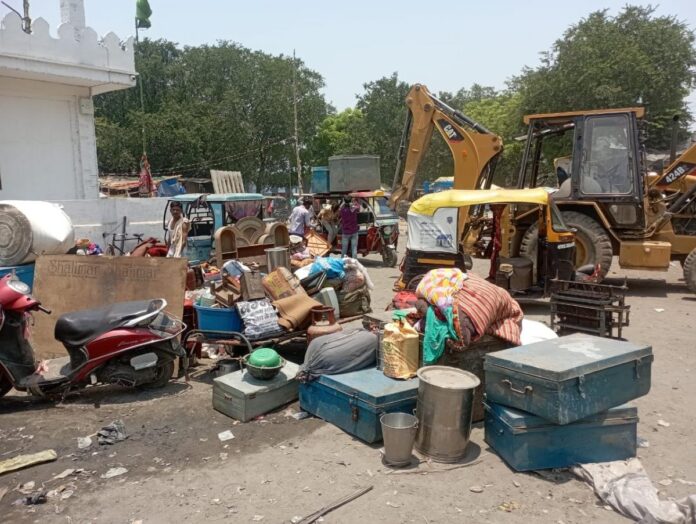Aradhana Pandey, TwoCircles.net
Varanasi (Uttar Pradesh): The ghats of Varanasi may shine brighter these days, but behind them, in the narrow lanes that once cradled humanity, lives are being wiped out one by one. Also known as Kashi and now touted as Prime Minister Narendra Modi’s version of ‘Kyoto’, the city is turning against its own people in the name of development.
Varanasi has never been only a city of temples and palaces. It has also been a living tapestry woven with the lives of Dalits, sanitation workers, labourers, domestic helpers, rickshaw pullers and artisans – people whose tireless work formed the very heartbeat of this ancient city. However, today, they find no place in the sweeping visions of urban renewal. On paper, they were labelled “illegal encroachers”. And then, without warning, the bulldozers came, razing their homes and histories in a stroke.
The Night Bazaar Fell Silent
On the night of July 4, 2025, bulldozers rolled into the “Night Bazaar” in front of Varanasi’s Cantt Railway Station. Past 9 p.m., a large force from the municipal corporation, accompanied by heavy police, arrived allegedly without warning and tore through the stalls selling chaat, tikki, tea and litti-chokha. In minutes, dozens of tiny shops, where poor vendors earned their daily bread, were reduced to rubble. Eighty-three stalls were demolished in five hours. Only the public toilets were spared. That night, tears replaced sleep for dozens of families.
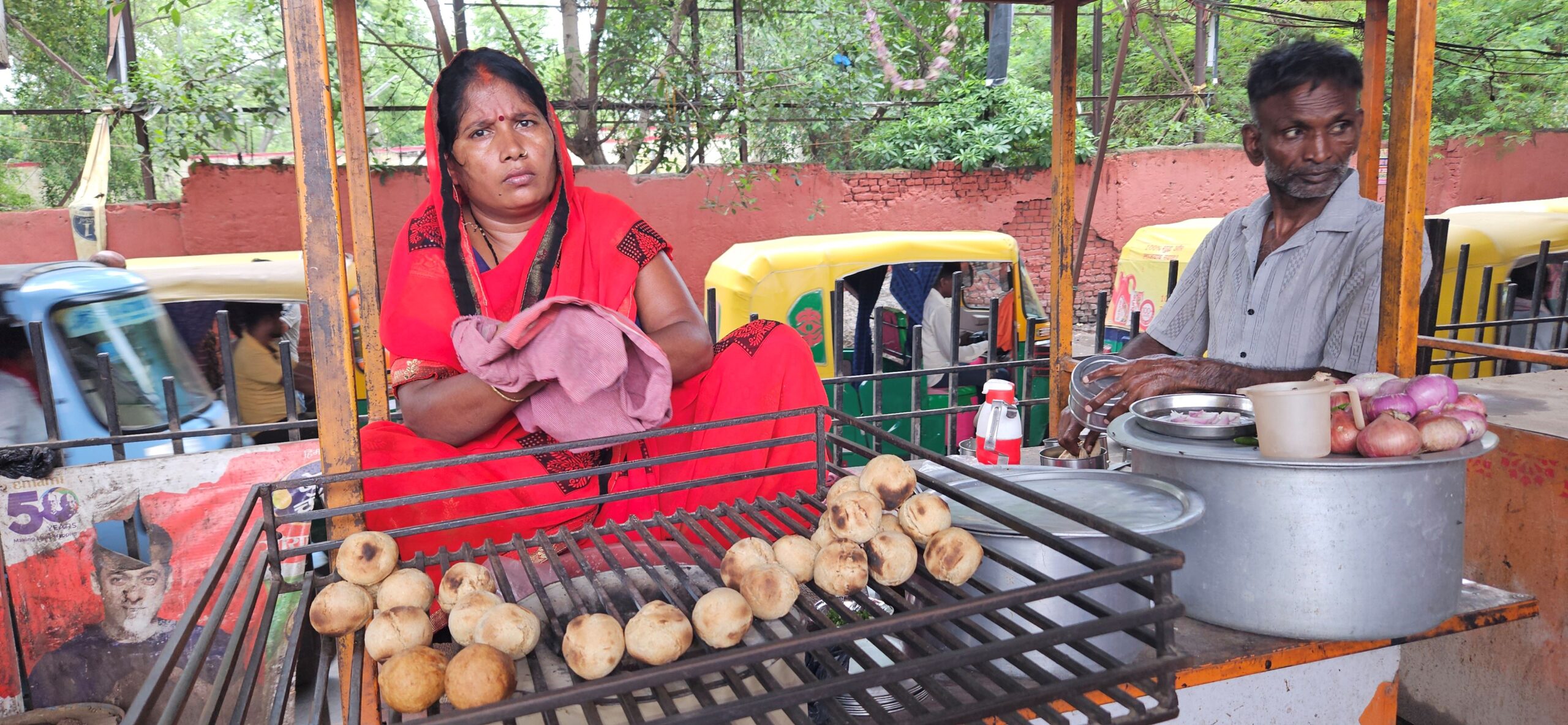
Pushpa Devi, a woman who sold litti-chokha from her handcart, was among them. Her modest earnings fed her four children, paid for their medicines and kept hope alive. Now, the cart is gone and so is her income. The children are hungry. “We were not thieves or criminals. We just worked hard. Now, how will my kids go to school? Where will we get books and notebooks?” she said, with her voice low.
Raju, too, lost his cart. Everything now lives in memory – the familiar aroma of litti-chokha and the friendly banter with customers. “We paid rent, kept the area clean and followed rules. Still, they removed us,” he said, despondent.
Where there used to be the smell of food and the noise of carts, now there is only garbage and dry leaves blowing in the dust. The Smart City project wiped everything out.
Officials say that beautification will come next, and lights and benches will be installed under the flyover. But what use are benches to parents whose children can no longer attend school?
Vijay Yadav, who had set up a small eatery after migrating from Mehnagar in Azamgarh, said, “We followed every rule, but we were still evicted. Now, I will have to take my son out of school.”
Development at What Cost?
Once a lifeline for the poor, the ground beneath the flyover has now become another part of a beautification plan. Every evening, the Ganga Aarti (a devotional ritual that uses fire as an offering to Ganges – a river considered a goddess in Hinduism) illuminates the city. But darkness has settled in the homes of the evicted. “Is hard work a crime now? Is there no space for the poor in a Smart City?” he asks.
Journalist Shailendra Singh explains, “The Night Bazaar was the last hope of people who could not afford a shop elsewhere in the city. It was a parallel economy built on dignity, labour and self-reliance. Destroying it overnight is an economic blow as well as a setback for social justice and humanity.”
The eviction of Dalit communities is not new in Varanasi. The Kashi Vishwanath Corridor displaced residents near Manikarnika Ghat. In May 2023, the demolition of Kila Kohna near Rajghat destroyed entire lifelines in the name of “removing encroachments”. Earlier this year, the Kazzakpura settlement of sanitation workers was turned into rubbles for “development”.
Under the Shadow of the Bulldozer
Kila Kohna housed not only Dalits, but a large population of minorities and backward castes. One day, an alleged vague notice from railway arrived, asking residents to “vacate this land” as “it belongs to the Railways”. The notice allegedly did not have an issue date and no details of resettlements.
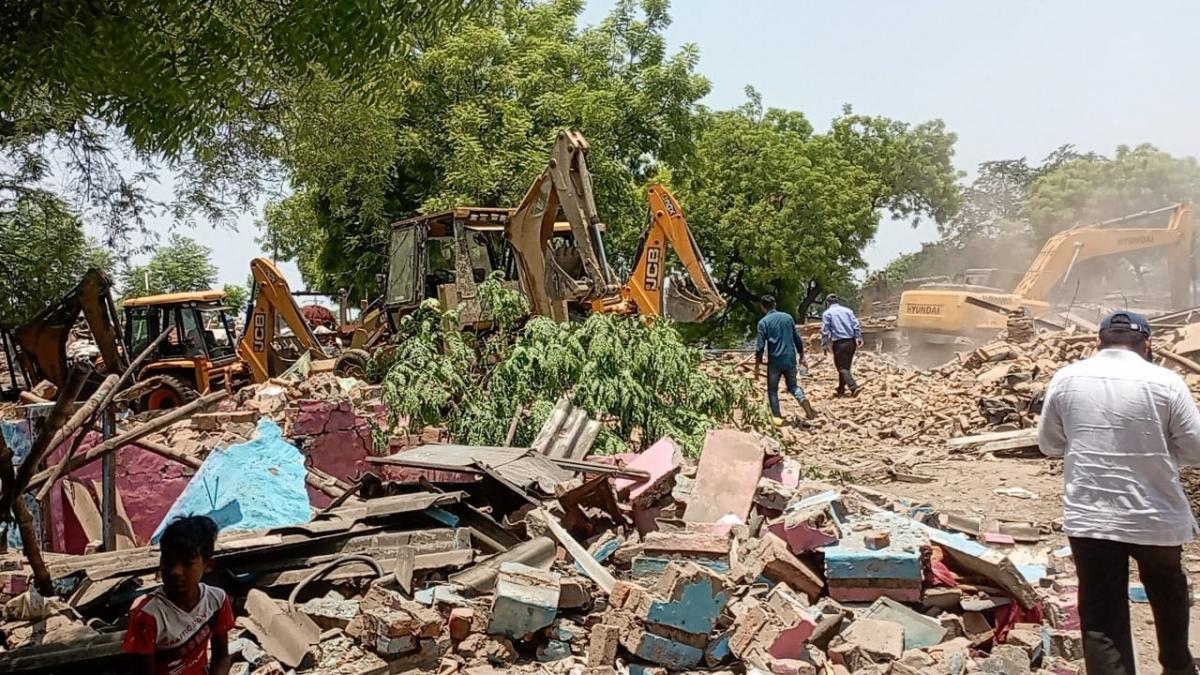
These were people who had been paying house tax, electricity bills, held ration cards and voter IDs. They believed they were legal residents. But to the administration, they were just “illegal occupants”.
This land is now earmarked for an “international-standard Inter Modal Station”. As bulldozers roared and police surrounded the settlement, people were not allegedly even allowed time to gather their belongings. Women, children and the elderly sobbed under the open sky. More than their homes, it was their entire world that was destroyed.
Children’s school bags were buried under debris. Families lost their medicines and rations. Women-headed households suffered the most. They allegedly did not get any alternate shelter. Petitions were filed and court doors were knocked. But the answer was always the same, “Development is necessary.”
In the glitz of G-20 summits and the grandeur of Namo Ghat, there seems to be no space for the poor.
Rauf, a resident near Kila Kohna, says, “In creating a ‘new Kashi,’ the soul of the old Banaras is being crushed. These communities cleaned the ghats, rowed boats and stitched quilts. But they find no mention in the government’s idea of development.”
The Homeless and Forgotten
Thousands now live without a roof. In the past decade, not a single government agency in Varanasi has created permanent housing for the poor. People live under plastic sheets or rented single-room accommodations.
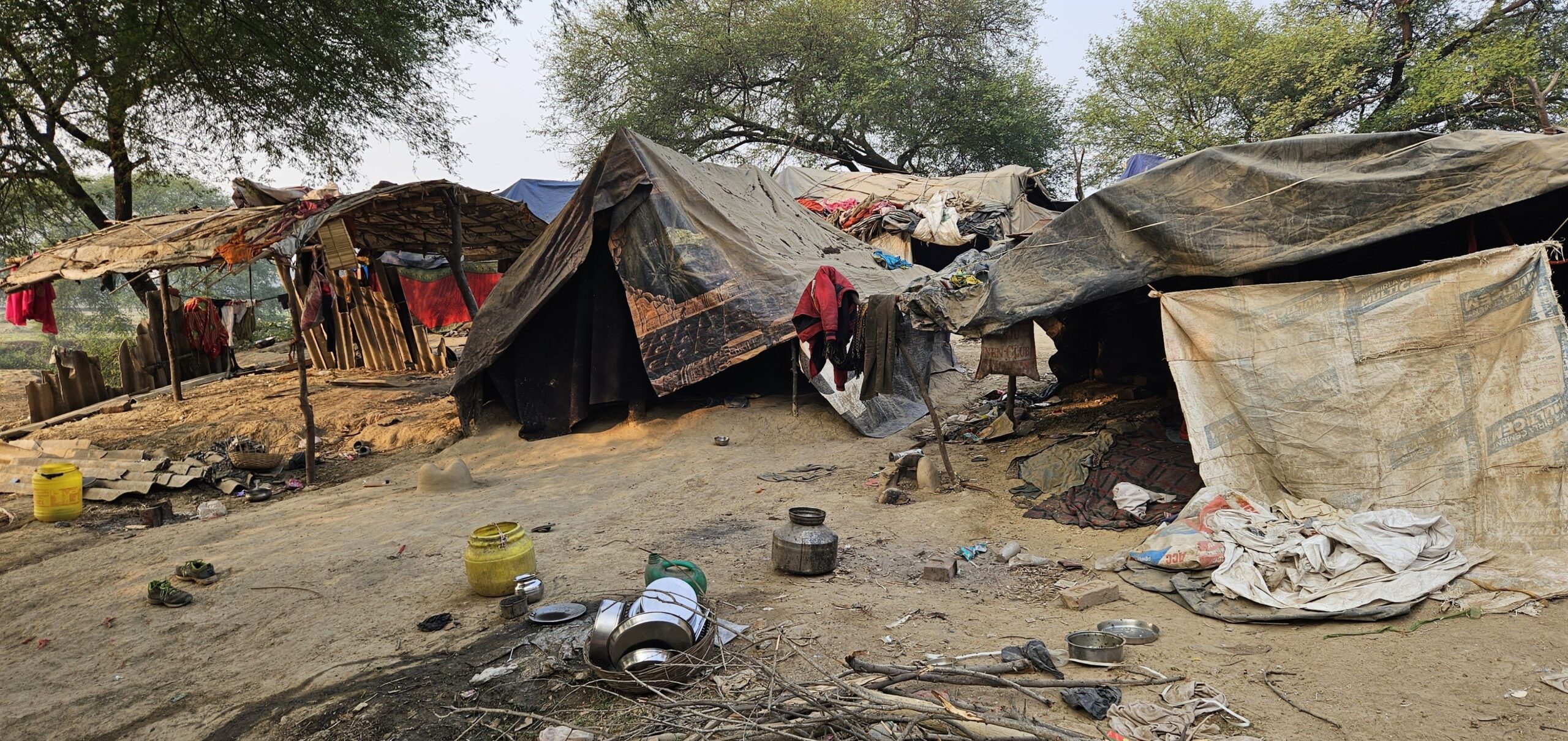
Bhola Yadav now lives in Sujabad village in Chandauli district. His two children, Abhishek and Suman, are trying to adjust to a new life among strangers. “Our home and shop were here. Now, we travel to Bansant Mahila College every day to run a kiosk, but it is not working. We are barely surviving,” he says.
His wife Bhawan Devi adds, “The government stole our children’s future. Their school is gone. Our world has changed. There is no hope left.”
Bhola pays Rs 3,000 in rent for a tiny room; and sometimes, even two meals a day have become difficult. “Everything is ruined. The kids no longer study. We are just existing.”
Jiut Yadav too now lives in a rented house by paying Rs 3,500 plus electricity. Work is irregular. “When the house was destroyed, it felt like life was destroyed too,” he says.
Dhaji Devi, wife of Vishwanath, weeps, “Our elders died at Kila Kohna. We grew up there. Now they say we do not belong. What kind of development crushes humanity?”

Thirty-year-old Soni Yadav is bitter. “Life has become unbearable. The Modi government only demolishes homes and shops but never rehabilitates the affected. Our traditions are buried under rubble,” she alleges.
Suman Yadav, who was studying in Grade 8, now does housework. “School feels like a dream. My father cannot afford it,” she says.
Bhola’s son Abhishek, once a top student, has lost his will to study. He sits quietly. There is no familiarity and no known teachers. Health care is now a distant luxury. Earlier, they had a local doctor. Now the hospital is too far. Private clinics are out of reach. Women feel unsafe. Children have gone silent. Elders just remember what was lost.
Political Silence, Bureaucratic Cruelty
Journalist Dilshad Ahmed says, “Dalits and minorities are a major vote bank in Varanasi. But when their homes were destroyed, no leader spoke for them. Not a single Dalit or Muslim representative came forward. Even opposition parties brushed it off as a ‘local issue.’ This silence deepens their isolation.”
Despite massive budgets for smart city projects, there is no concrete plan for rehabilitation. Only vague promises—never fulfilled. “Is development meant to uproot the poor? Is a Smart City one that erases its most vulnerable?” Dilshad asks.
In areas like Shivpur, Lahartara, Bhojubir, Sarnath and Ramnagar, the official line remains, “These are illegal encroachments.”
Journalist Amit Patle points out, “Large houses, encroached bungalows and hotels stand untouched. The bulldozer only comes for the poor.”
When Modi became MP from Varanasi in 2014, Dalits and minorities hoped they would get homes. Allotment letters were distributed in Arajiline, but those houses were never built. Thousands still live like insects without dignity or safety.
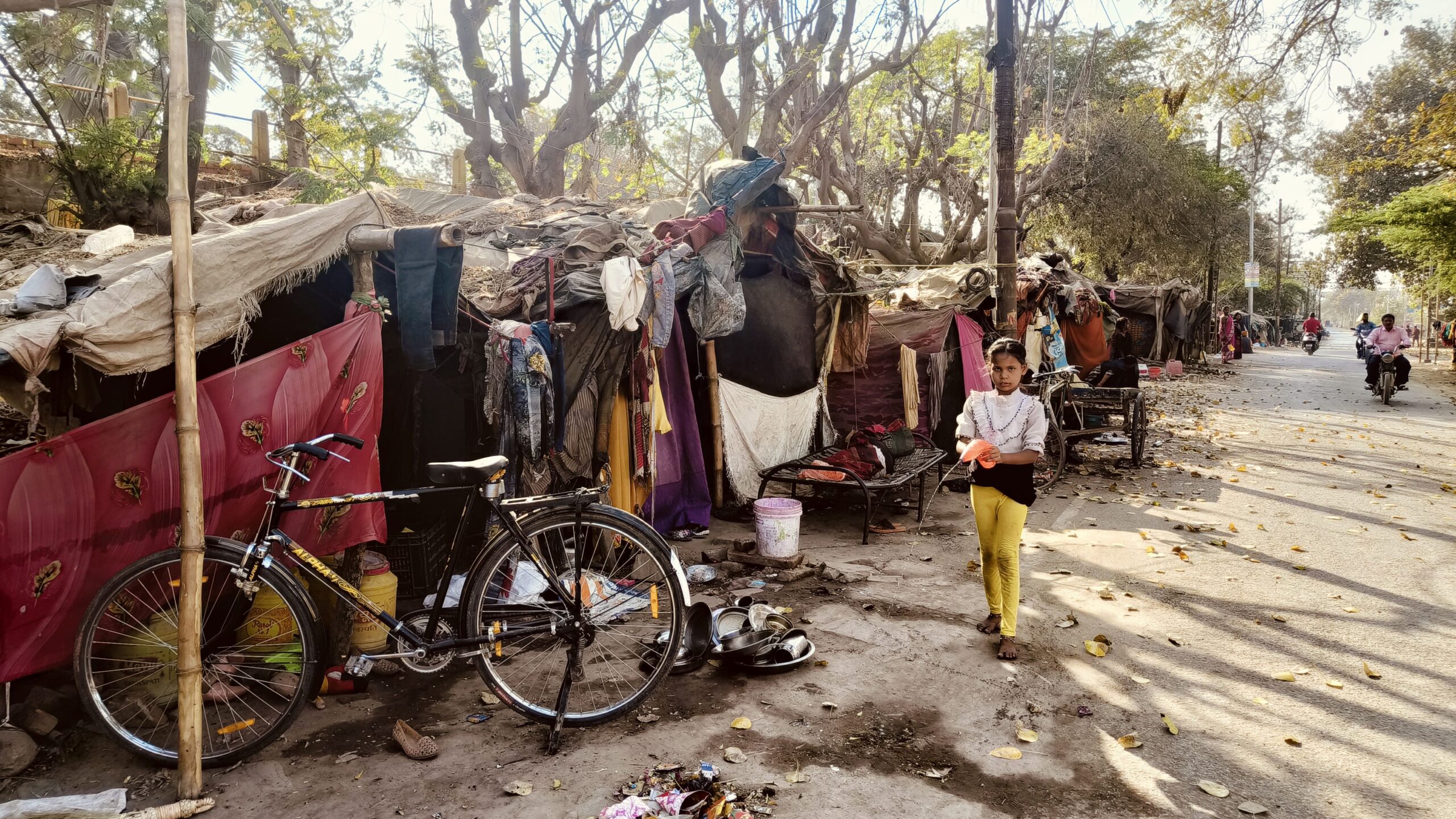
10-year-old Azhar, once a fourth-grade student, now hauls sacks near the railway station. His mother Rukhsana says, “We dreamt of educating him, and making him something. But if there is no home, how can there be school? If his stomach’s empty, how will he open a book?”
PM Modi’s slogan says “Sabka Saath, Sabka Vikas, Sabka Vishwas”. But families ask, “Are we included in this ‘Sabka’?”
The Cost of Progress
While crores are spent on corridors, flyovers and decorated ghats, those evicted from the same areas are left with nothing. Some appealed, some went to court, but for the poor, justice is slow, expensive and often out of reach.
Advocate Prem Prakash Yadav says, “Courts approve demolitions but do not ask where the people will go. Is this constitutional to render a citizen homeless overnight?”
Anil Kumar from Dalit Foundation says, “The poor evicted from Khidkiya Ghat, Manikarnika, Kila Kohna and Karsada were all from marginalised communities. Government energy is focused on infrastructure, but not on livelihoods or homes for the poor.”
His voice carries anger, but also despair. “No leader and no activist stands with them anymore. Those displaced are now living by drains and railway tracks. Promises of rehabilitation remain unfulfilled,” he said.
Rajendra Tiwari, former head priest of the Kashi Vishwanath Temple, says, “We hoped that those displaced for the corridor would get homes and jobs. But the temple’s management was handed to Ernst & Young, a foreign company that imposed harsh rules. Sanitation workers in the temple complex do not get fair pay or respect. It is not a job but a daily battle for survival.”
The Childhoods Buried Beneath Debris
Senior journalist Vinay Maurya says the current model of development in Varanasi is driven by profit, not need. “When children grow up among dirty walls, garbage and no space to play, their cognitive development suffers. Without the necessary emotional stimulation, their IQ levels drop. Their ability to think and imagine is stunted.”
According to a UNICEF report, urban poverty is now worse than rural poverty. Thousands of children in Varanasi live by drains, tracks and slums. No parks, no proper food and no tools for learning.
Vinay concludes, “Poverty not only leads to hunger but also imits dreams and imagination. It is the government’s duty to provide shelter, education, nutrition and safe spaces to play. Otherwise, the next generation will remain trapped in the same cycle of suffering.”


